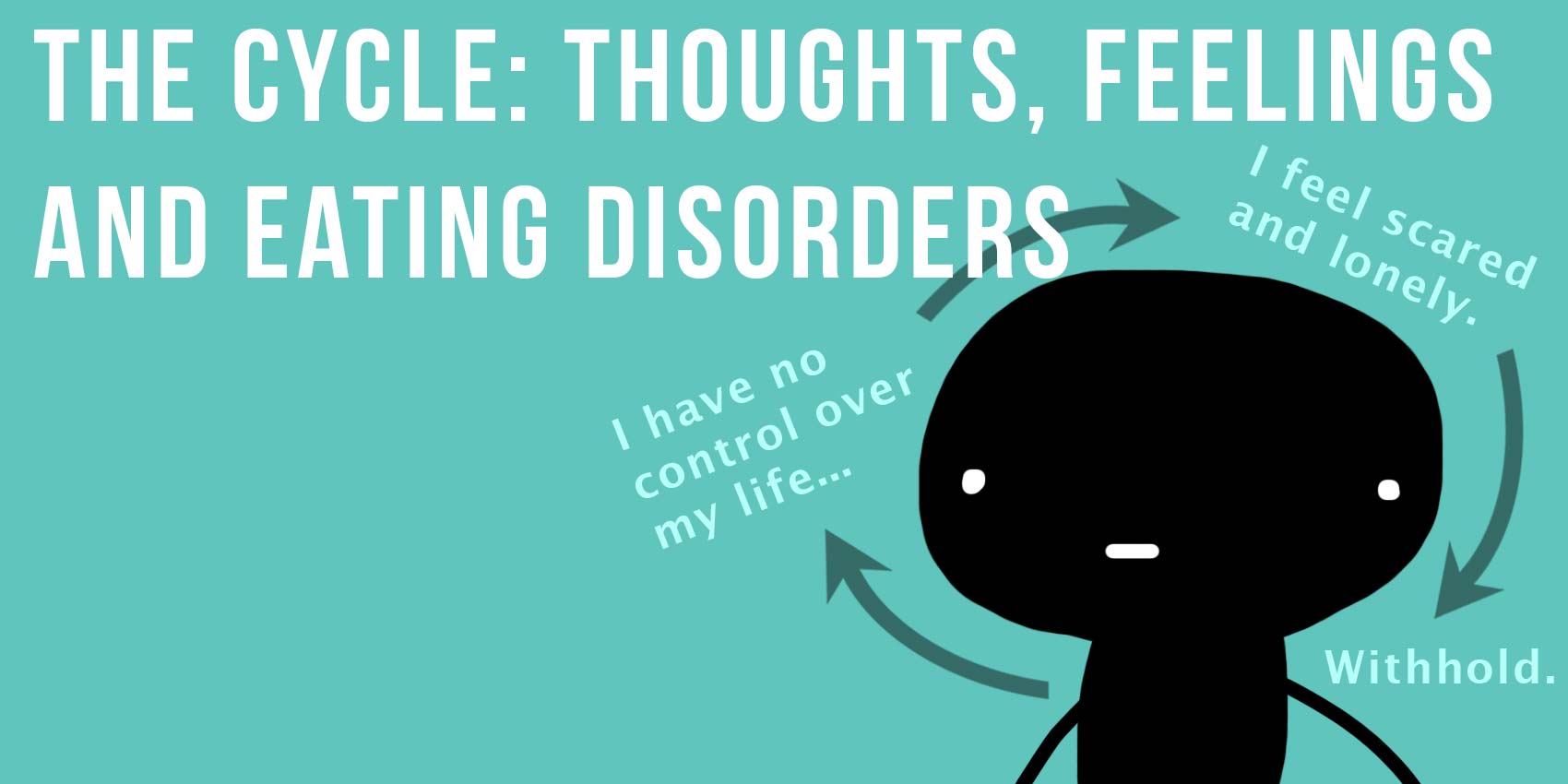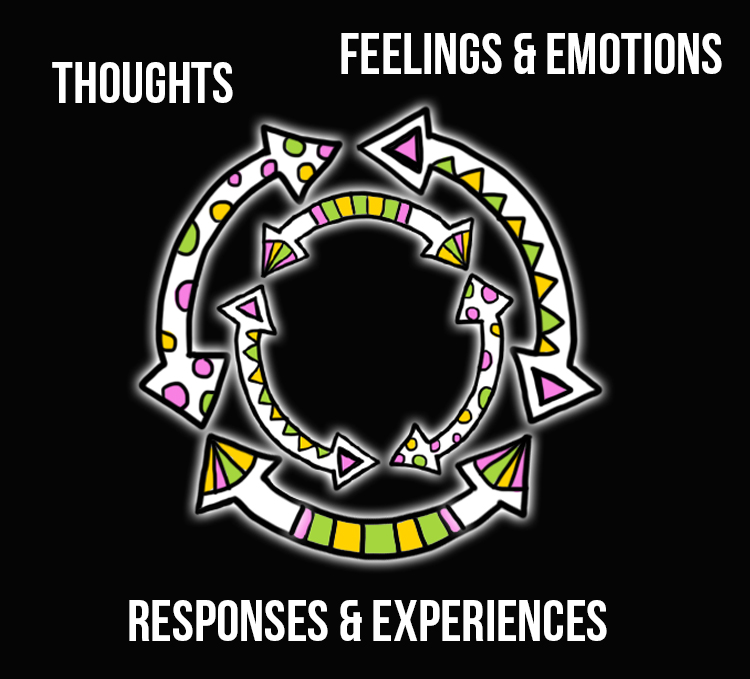07 Feb The cycle: thoughts, feelings and eating disorders


No matter what triggers an eating disorder initially, like most behaviors, eating disorders are driven and maintained by the thoughts and feelings a person has about him/herself. If you have spent anytime with the Your Self Series of books, you will be familiar with this diagram:
This diagram reminds us that thoughts create feelings, feelings influence behavior and that behavior influences how we think and feel. (It works in reverse too with behaviors influencing how we feel and think).
For example, with eating disorders, people may begin with poor thoughts about themselves such as, “I’m not attractive. I need to lose weight.” These thoughts may create feelings of anxiety or sadness which can cause a person to try to lose weight (behaviors) to lessen those feelings. This is a somewhat normal response. But as noted above, if you have a genetic predisposition (the biology part) or if you have a tendency for perfectionism, for example, these thoughts and feeling can become overwhelming and drive eating behaviors that are extreme. For someone with perfectionism, the thought “I need to lose weight” can spiral into, “I must not eat anything except lettuce” or “I must be under 100 pounds.” Because of this interaction between thoughts, feelings and behaviors, the treatment of eating disorders takes a cognitive-behavioral approach: First, the behaviors are tackled and then the thoughts and feelings that contribute to those behaviors are addressed. (Although in traditional CBT thoughts and feelings are often addressed first or at the same time as behaviors, with eating disorders the behavior is tackled first.)
For some people (not all), the focus on food can be a way to manage underlying emotional issues, whether that be anxiety, depression, fear, peer pressures or abuse. All the energy from those emotions gets channeled into an obsession with food and weight. These emotional issues that underlie an eating disorder are often the hardest for people to understand. Think of having the flu: you get a runny nose, fever, chills, aches etc. These are all symptoms that make you say, “I have the flu!” But the symptoms are not the cause: you have the flu because a virus has invaded your body. To treat the flu, you want to rid your body of the flu virus.
Try to think of eating disorders in the same way: the obsession with thinness, the focus on food, the poor body image associated with these diseases are often SYMPTOMS of the disease. The real cause, the virus in the body, is an emotional, psychological or biological issue that needs to be addressed in order to get better. Those are the things that were discussed in the previous section.
So treating an eating disorder starts with changing the behavior (for example, getting a person with anorexia to eat) then dealing with the thoughts (for example, changing thoughts so that they are more positive “I can eat food, I need it to live”), and then addressing the underlying emotional, psychological and/or biological issues that tend to trigger the thoughts and feelings that drive the unhealthy behaviors.




Post Question:
What symptom of eating disorders is hardest for you to understand? Why?
Answer the post question here
What's being said